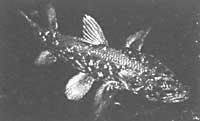Celacanto: fascinating story of a living fossil
1990/12/01 Martinez Lizarduikoa, Alfontso Iturria: Elhuyar aldizkaria
Some ichthyology with the ancestors of celacanthus
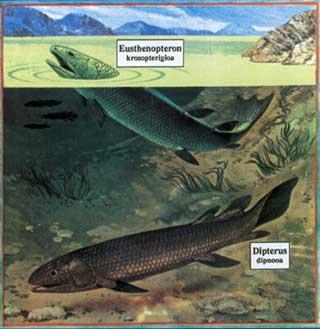
In the warm waters of the debonic period Sarcopterigio emerged 400 million years ago. Those special fish with bones were able to breathe air thanks to their primitive lung. Through this evolutionary advantage they had great success and quickly expanded into a special environment. The sarcoterigians, without evolutionary competition, created two very interesting species for us: Dipnoos and Crosopterigios.
The dipnoos first invented terrestrial respiration. In those hard times, the fish that lived in the swamps were subjected to very harsh conditions. When the landings arrived, the water in the marshes disappeared, killing all the species of animals present in them. But the Dipnoos invented a wonderful maña to overcome those hard times.
When the landing arrived, those fish kept their bodies under the mud of the lakes making a hole in it, and then covered the body with a special fluid that would be the cap. In that cocoon they pulled their mouth out of a hole and took the little oxygen they needed to maintain that slow life. The direct consequence of this singular life was the atrophy of the fins, which had great importance in the evolutionary process, since the dipnoos were not a privileged species that passed from the waters to the earth.
The crosopterigians had better luck and some of them spread everywhere, like the celacantos, spreading to the great seas. But what interests us in this story are sarcoterigios, which adapt to fresh water. These, instead of remaining like the dipnoos in the same swamp when the landing arrived, were heading towards wider and deeper lakes to perpetuate themselves, which forced to turn the fin into a primitive leg to be able to travel the land road between the lakes. This adaptation was an invention of great importance from the evolutionary point of view. The molded fish are the ripidistians.
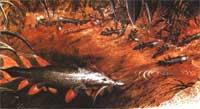
The first vertebrate to be derived from the ripidistians was able to adapt to the conditions of the earth. Breathing ground air that for the first time would achieve the independence of underwater breathing. Eusthenopterona, for example, was able to leave the water and had common characteristics with the first amphibians: the skeleton, especially the teeth and the shape of the fins.
The paleontologist, taking into account the above, began to search for the species of dipnoo that traveled the sea to land for the first time. But they found an insurmountable obstacle. All dipnoos disappeared 280 million years ago. At that time great climatic changes occurred and all lakes dried up, eliminating all existing species. Therefore, the scarce study materials were the skeletons of fossils and some teeth. It was a scarce material to study the functions of the animal.
If someone had survived, everything would have been different, but how could that miracle happen? That is, how can a species be kept alive without changing for 300 million years? This only happens in the new scientific fiction churches.

Surprising celacanthus fisheries
On December 22, 1938, fishermen from the South African coast landed a very curious fish. The fish was a metre and a half long and covered with dark blue scales. The capture of the animal resulted in chilling bites that survived for four hours before dying. The captain of the boat had never seen such animals. As he later said, the most surprising feature was the fish fin, which had been shaped like legs. The captain of Goos intuitively introduced the fish into the freezer so as not to rot and sent it to the museum of his village when he returned to the port.
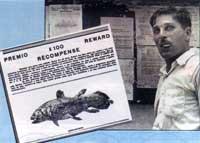
The boat lasted three long days on the high seas and by the time the fish arrived at the museum would already rot, with its dark blue color completely lost. Therefore, the head of the museum (Ms. Latimer) removes the skin, preserves the skull and inserts in the refrigerator the parts that would not yet rot. Latimer thought he could be an interesting animal, but his wisdom was not enough to classify that singular fish. So he called a friend who worked in another museum to study the obtained animal.
Professor Smith, known by Mrs. Latimer, spent a few days until his arrival, but seeing the last parts of the animal was very excited. As I would later say to journalists, he said: If I had entered a dinosaur in my office I would not have been surprised any more. The species in front of Smith was Celacanto, a species that, according to scientists, disappeared 60 million years ago and was older than dinosaurs. As the press of the time pointed out, and did not exaggerate anything, it was the XX. The most important zoo episode of the 20th century.
That Celacanthus was a living fossil of the Mesozoic period, direct after the Crosopterigios del Deboniense, species duly adapted to the environment, for which he lost his lungs and replaced them with gills like fish. It was not therefore the successor of the four legs, but the cranial shape was like that of the amphibians and presented the most outstanding characteristic (having the fins turned into legs).
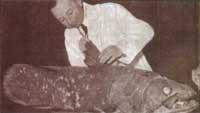
In the beginning the scientists did not believe the news that Professor Smith promulgated, but after the study of celacanthus there was no doubt: that animal fulfilled all the characteristics of the fossil celacantos. As soon as the news of the existence of celacanthus, all paleontologists began to study the genealogical tree of the strange animal found, and Professor Smith opened the so-called S.O.S to all the seaports of South Africa with the aim of getting more Latimeria (so called the species in honor of Mrs. Latimer). To do this he printed the photograph of the fish on posters so that the fishermen knew the celacanthus.
Sherlock Holmes in search of celacanthus
Then Professor Smith began a long and hard investigation as a detective paleontologist with a single objective: Get a live celacanthus.
The initial news was unfortunate. Then the World War arose. And when the weapons altercations ended, no one from the Latimería was remembered. Smith remained obstinate on the investigation, but had to spend fourteen more years.
We are already in 1952. We are not in South Africa, but much further north. We are in the islands of the comoros. The so-called S.O.S. Professor Smith arrives to him. Among the fish on sale there is a fish with blue scales and fins like legs. Captain Hunt is walking through the goods on the market.
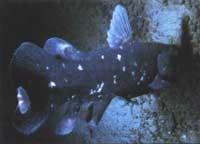
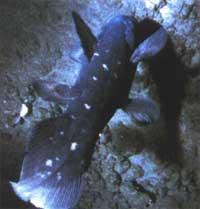
In sight he sees a giant blue fish. He suddenly remembered Smith's photo and ran to call the paleontologist. Undoubtedly to dial the phone number and fourteen years later the second celacanthus has been found. In the second, things went very well. Captain Hunt bought formalin and injected two liters into the beam. He opened the body in two parts and surrounded it with ice.
Professor Smith took the plane and five days later came to Anjouan. There, they say, when he was in front of the fish he knelt and cried without control. At first Smith thought he was facing a new species, since the animal that was there had no back fins. But in the next two years, in the same place, seven other specimens were captured and as they all had that fin, Smith concluded that the first fish was mutilated.
J. The celacantos obtained at that time, as the Comores depended on the French State. He investigated French scientists Millot. Millot managed to put a large celacanthus in an aquarium and there he studied it for twenty hours, during the survival of the animal. He naturalized the seven fish and researched very carefully. The result obtained after the work was not very positive. Latimeria did not respond correctly to its fame. Formerly it was thought that this special animal was the missing link in the process of passing from sea to land. That was not proven. The blood in the latimory is similar to amphibians, but it has lost the lung and breathes oxygen through gills. As we mentioned at the beginning of the article, although some crosopterigios landed, the celacanthus expanded on the high seas and there it again acquired the characteristics of the fish.
However, these investigations were very limited if we consider that animals were killed or very stressed in an aquarium. What was the behavior of those primitive fishes in their natural environment? How to unravel the core of this attentive secret for 300 million years?
And finally ...miracle! ! News
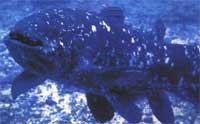
Hans Fricke is a marine biologist working at the Max Planck Institute in the Federal Republic of Germany. He carried out a work of great importance that consisted in locating the underwater habitat of the celacantos and providing evidence of that discovery.
In 1972 he was responsible for an expedition organized by the National Geographic Association. And since then Komora has constantly researched. To carry out these investigations he spoke with the fishermen of the Gran Comore and thanks to the information obtained from them he concluded that almost all the celacantos were captured on the western coast of the Gran Comore. Aware of this, her main concern was to direct her.
He has spent fifteen years exploring under the sea. In 1987 he dedicated himself to diving with a two-seater dive to know the environment of the living fossil. In the last expedition he made 21 dives and accumulated many data. For example, it recorded sea levels of 15 to 17 degrees; (if we analyze the blood of the celacantos) It is believed that the latimerías would have to go to those levels. He also measured the oxygen content of the water or salt concentration, and studied the seabed, where the fish caught by the celacantos were.
However, despite his interest, the first actor or Latimeria of this story did not appear at all.
When I was doing the 20th dive, and I was mechanically computing the usual data, at a time when it was not expected, the blue fish of a meter and a half before the dive window began to observe the light emitting the dive. Like Captain Nemo of a novel by Julio Verne, Hans Fricke began to be nervous following the ghost emerging from the dark of evolution. The animal circulated quietly and with the rear fin was pushed to direct the body forward.
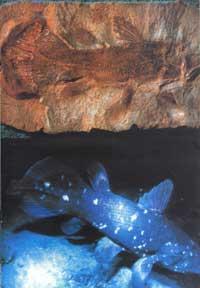
The movements of this animal of another era were extremely rare, moved the fins turned into uncontrolled legs and, in addition, circled 180 degrees like the thiovians. As I watched these surprising events, on the other side of the glass suddenly appeared other zi zelakanto. It was an amazing show! ! As if he had seen two plesiosaurs, he kept the film camera to shoot as best as possible that episode of Mesozoic.
The organic remains on the pavement were about 200 meters deep, in which the animals ate upside down. As if there were no predators in that ecological corner of this fish, I ignored the diving that had the courage to break the peace of 300 million years. Hans Fricke remained watching them for a long time. In the end, when he had to climb back up, as if he had traveled to a past 300 million years, he told all the news to the people who were on the boat.
About the future of latimeria
With these latest discoveries some dark points about celacanthus have been clarified. As we know through fossils, it has been confirmed that the thorns of the celacanthus fins are empty, so already in 1843 the naturalist Louis Agassiz decided to put this name (Zelakanto = Arantza empty). As mentioned above, the movements of the fins of this animal are very different from those of other fish.
The trait that has most surprised the naturalist has been the fact that the celacanthus, of so old origin, is so little evolved, so little altered for so many years. The only explanation is that the ecological corner of the Comores Islands has barely changed over millions of years and that there are few predators in the area. According to others, Latimeria has achieved a very special balance with the environment, and although the environment changes, the characteristics of the species persist without evolving at all.
However, in the case of Latimeria what is clear is that it has differences with the older relatives it had. The highlight has been the lung. The lung that has the latimeria does not serve to breathe, is full of fats and works as a float. This means that these animals have adapted to the way of life of the seas approaching their morphology.
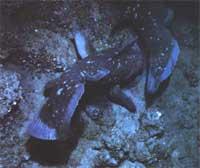
Before finding a living latitude, it was thought to be the closest relative of four-legged animals. Today it is noted that this is not so, and in that sense celacanthus has always lost some of its prestige after the last starts. The latimory is not the missing link of such an anxious evolution.
However, the discovery of celacanthus has had a great scientific importance. Fricke has been able to see Latimeria on the seabed for a long time, sometimes more than two minutes long. It seems that Latimeria detects electrical areas of small animals that are verbally hidden under the seabed. To maintain this balance it needs a complex coordination of the fins, which is what we should ask a forerunner of the four legs. Therefore, when the nervous coordination of these animals is seriously investigated, we will enter a fascinating area.
But now there is another great risk for this witness of evolution. The latimería is fashionable and the museums of all the villages want one for their aquarium. In this way, the black market of the celacantos has been created, and although harsh laws prohibit fishing, there are more and more unauthorized catches. In addition, in the eastern countries it is considered that the bone marrow of this animal drinks and gives life to those who drink it, and in that liquid would be the formula to last. Hence this unique species remained alive for 300 million years. Of course, all this is a lie, but the black market has found a good deal, despite the violation of all current legislation.

50 years ago we believed that all the celacantos disappeared along with the dinosaurs. In 1938 he discovered how little we know about zoology and paleontology, catching the latitude for the first time. Today we have a great opportunity to analyze the evolution and ethology of this old animal in its natural environment. Let us think that this discovery has been as if we encountered the plesiosaur of Loch Ness. Will we be so short to end this wonderful opportunity we have now? If Latimeria disappeared trapped by human beings, we would not deserve another opportunity. Caring for or killing this curious animal will indicate the degree of intelligence that man has acquired as a species. We will see what the future answers.
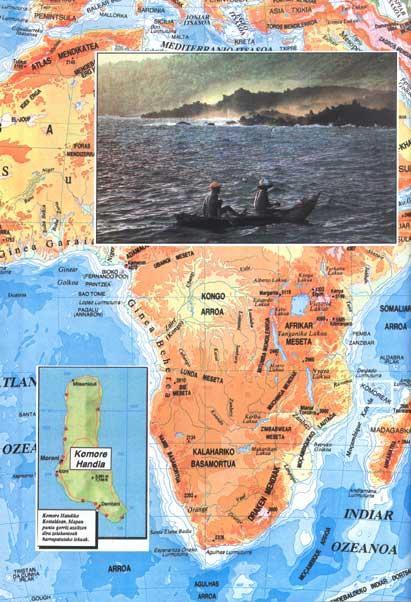

Gai honi buruzko eduki gehiago
Elhuyarrek garatutako teknologia




